
Nepenthes rajah from Mt. Kinabalu, Sabah, Malaysia
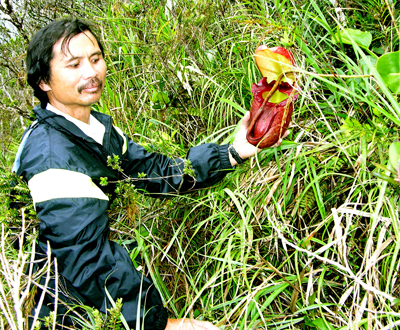
Carnivorous plants are fascinating in that they capture and digest various prey in order to accumulate nutrients for growth. The habitats where they normally occur are nutrient poor. There are many species of carnivorous plants and they are found throughout the world. Of the seven genera of Pitcher plants, the Nepenthes genus is the largest found from Northern Australia throughout Southeast Asia to Southern China. There are also some species found in India, Madagascar, and a few other islands.
The island of Borneo has more Nepenthes species (approximately 31 species not including subspecies or varieties) than any other landmass. There are three countries that divide Borneo; Malaysia, Brunei, and Kalimantan. In the state of Sabah, Malaysia, Mt. Kinabalu at 4101 meters has nine species of which four are endemic to the mountain and surrounding areas.
Linnaeus gave the epithet Nepenthes as the name of this genus of Pitcher plants. It is a Greek word meaning “removing all sorrow” originally given by Homer in the Odyssey to an Egyptian drug thought now to have been opium. Apparently the liquid found in the pitchers was the analogy.
Nepenthes rajah was named in honor of Sir James Brooke, one of the white Rajahs of Sarawak (the other Malaysian State in Borneo). It is only found on Mt. Kinabalu and an adjacent mountain, Mt. Tambuyukon, between the altitudes of 1500-2600 meters. The pitchers can grow large enough to contain up to one liter of fluid and are normally found on the ground contrary to most species that have stems that grow up into trees and have pitchers growing off them. This Pitcher plant is famous for it's ability to catch and digest rats, frogs, and lizards. Most other Nepenthes sp. capture a wide variety of small invertebrates and insects but nothing as large as a rat.
As seen in these photos, the habitat where N. rajah is found is usually moist, well drained, open grassy clearings that are prone to landslides. The soil conditions are always ultramafic. This is soil that is very low in silica content and very rich in iron and magnesium. These photos were all taken in the Mesilau forest preserve at the higher end of their latitudinal habitat at approximately 2600 meters.
The Convention on International Trade in Endangered Species of Wild Fauna and Flora (CITES) has listed two species of Nepenthes in Appendix I, which includes all species threatened with extinction. Nepenthes rajah and N. khasiana are on Appendix I. All other species of Nepenthes are on Appendix II, which includes all species which although not necessarily now threatened with extinction may become so unless trade in specimens of these species is subject to strict regulation in order to avoid utilization incompatible with their survival.
For further reading:
- “Nepenthes of Borneo” by Charles Clarke, Natural History Publications (Borneo) Sdn. Bhd., 1997



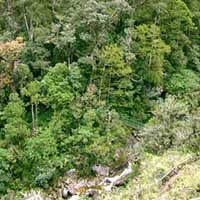
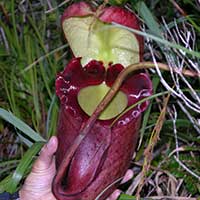
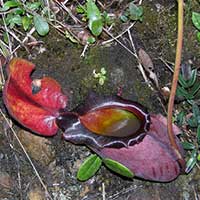
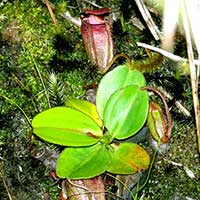
 About Plants of Malaysia & Borneo
About Plants of Malaysia & Borneo The Gingers of Kinabalu Park in Sabah, Malaysian Borneo
The Gingers of Kinabalu Park in Sabah, Malaysian Borneo Nepenthes rajah from Mt. Kinabalu, Sabah, Malaysia
Nepenthes rajah from Mt. Kinabalu, Sabah, Malaysia The Gingers of Peninsular Malaysia
The Gingers of Peninsular Malaysia